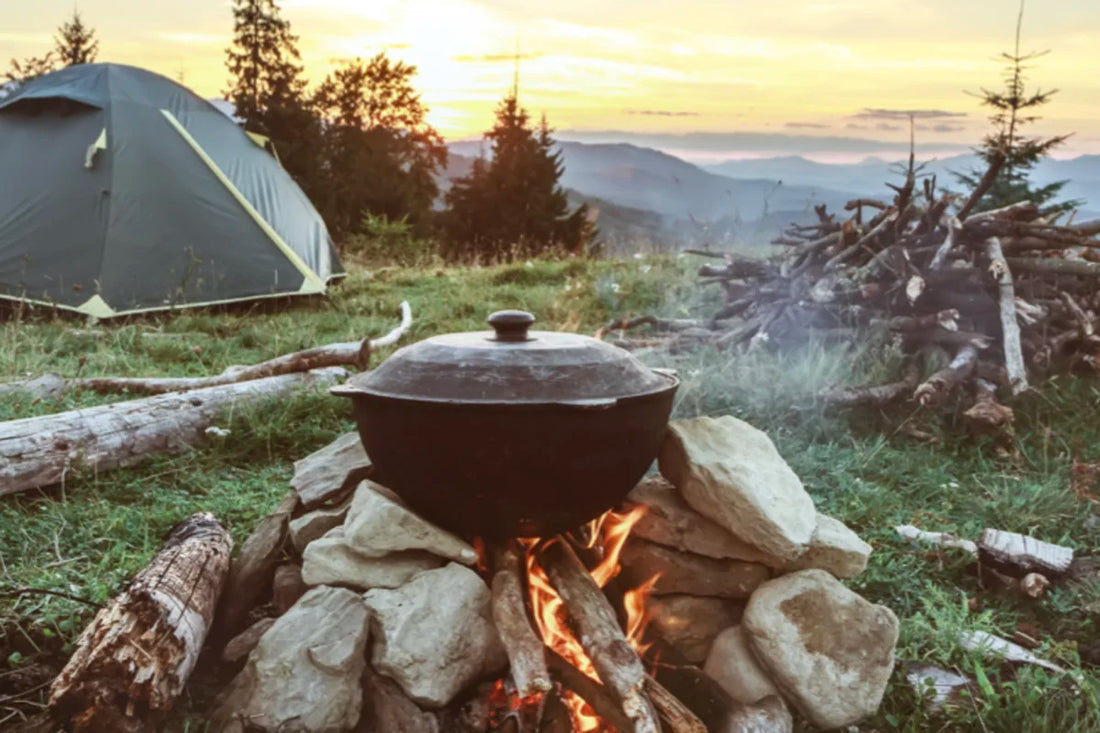When it comes to outdoor adventures, few things capture the essence of a memorable experience like cooking over an open campfire. The crackling flames, the enticing aroma of wood smoke, and the camaraderie around the fire create an unparalleled atmosphere. Campfire cooking is not just about sustenance; it's an art that combines skill, creativity, and a touch of wilderness magic. In this guide, we'll delve into 15 essential tips and best practices to help you become a campfire cooking maestro, ensuring your outdoor meals are not just nourishing but also a highlight of your camping escapades.
-
Choose the Right Campfire Cooking Equipment: Before you embark on your culinary adventure, invest in quality campfire cooking equipment. Opt for durable cast iron skillets, grates, and tripods. These materials can withstand high heat, distribute it evenly, and are easy to clean, making them ideal for open-flame cooking.
-
Safety First: Before igniting your campfire, familiarize yourself with the campsite's regulations regarding open flames. Ensure you have a reliable source of water nearby and a fire extinguisher on hand. Always keep a safe distance from the fire and be cautious when handling hot cookware.
-
Select the Right Wood: The type of wood you use significantly impacts the flavor of your dishes. Hardwoods like oak, hickory, and maple impart a robust smokiness, while fruitwoods like apple and cherry offer a sweeter aroma. Avoid resinous softwoods like pine, as they can produce unpleasant flavors and may contain sap that can be harmful.
-
Build the Perfect Fire: A well-built fire is the foundation of successful campfire cooking. Use a combination of tinder, kindling, and larger logs to establish a steady flame. Create a fire pit by clearing away any flammable debris and containing the fire with rocks. This not only enhances safety but also helps concentrate heat for more effective cooking.
-
Master the Cooking Techniques: Campfire cooking allows for various techniques, including grilling, roasting, baking, and even Dutch oven cooking. Familiarize yourself with these methods to diversify your culinary repertoire and create a range of delicious meals under the open sky.
-
Prep Ingredients Ahead of Time: Simplify your campfire cooking experience by prepping ingredients at home. Chop vegetables, marinate meats, and pre-measure seasonings. This not only saves time at the campsite but also minimizes waste and the risk of cross-contamination.
-
Invest in a Dutch Oven: A Dutch oven is a versatile and indispensable tool for campfire cooking. Its thick walls and tight-fitting lid make it perfect for slow-cooking stews, baking bread, and even whipping up desserts. Remember to season your Dutch oven properly to prevent rust and ensure optimal cooking performance.
-
Use Foil Packets for Easy Cleanup: Simplify cleanup by cooking certain dishes in foil packets. Wrap seasoned vegetables, fish, or chicken in aluminum foil and place them on the coals. This method not only retains moisture and flavors but also eliminates the need for extensive cleaning.
-
Bring the Right Seasonings: Elevate your campfire meals by packing a small selection of essential seasonings. Salt, pepper, garlic powder, and dried herbs can add depth and flavor to your dishes. Consider creating spice blends at home and storing them in compact containers for convenience.
-
Practice Leave No Trace Principles: Respect the environment by adhering to Leave No Trace principles. Pack out all waste, extinguish the fire completely, and avoid picking vegetation. Minimize your impact on the ecosystem to preserve the beauty of nature for future generations.
-
Experiment with One-Pot Recipes: Streamline your campfire cooking experience with one-pot recipes that require minimal cleanup. From hearty soups to flavorful risottos, these recipes allow you to enjoy a satisfying meal without the hassle of managing multiple pots and pans.
-
Adjust Cooking Times and Temperatures: Campfire cooking can be less precise than traditional stovetop cooking, so be prepared to adjust your recipes accordingly. Keep an eye on the temperature and cooking times, and embrace the flexibility of adapting to the unpredictable nature of open-flame cooking.
-
Enhance Flavors with Smoky Wood Chips: Take advantage of the natural smokiness of your campfire by adding wood chips to the flames. Soak them in water beforehand and toss them onto the fire to infuse your dishes with a rich, smoky flavor. Experiment with different wood chip varieties to discover unique and enticing combinations.
-
Master the Art of Grilling: Grilling over an open flame is a quintessential campfire cooking experience. Whether you're searing steaks, grilling vegetables, or cooking kebabs, mastering the art of grilling enhances the overall enjoyment of your outdoor culinary adventures.
-
Cap Off the Night with Campfire Desserts: Conclude your campfire cooking escapades on a sweet note with delectable desserts. From classic s'mores to creative twists like grilled fruit or campfire cones filled with chocolate and marshmallows, indulge your sweet tooth as you bask in the warmth of the dwindling flames.
Conclusion:
Campfire cooking is not just about sustenance; it's a celebration of nature, creativity, and the joy of sharing meals with friends and family under the open sky. By following these 15 tips and best practices, you'll not only master the art of campfire cooking but also create lasting memories around the flickering flames. So, gather your ingredients, stoke the fire, and let the magic of outdoor culinary adventures unfold. Happy cooking!

